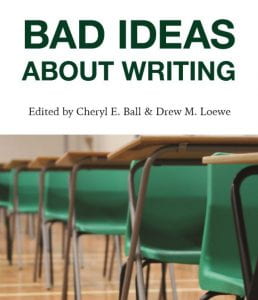When thinking about what proper English is, typically English spoken in professional settings and in classrooms is what comes to mind. The problem with this thought is that it creates a dynamic that this English is the standard and anything that doesn’t fall inline with this is inferior. How can we determine which form of English is grammatically correct? Surely there are forms of English that are considered to be inferior to Standard American English, like African American English (sometimes called black english, Ebonics, broken English, or slang). But why is this dialect considered less to Standard American English? It’s important to understand that African American English does not follow the grammatical rules of standard American English, but follows the grammatical rules West African Languages, and therefore cannot be considered an inferior type of English because, linguistically speaking, it is a different language.
According to linguistics, a language is categorized by grammar structure and not by vocabulary. To explain the difference between grammar and vocabulary in language, Jennifer Cunningham states, “English is considered a Germanic language because its grammar follows Germanic rules, even though its vocabulary is largely French and Latin. Likewise, African American Language is more grammatically African than English, even though its vocabulary is English. Therefore, it follows logically that African American Language ought to be considered linguistically…an African language” (Cunningham, 89). Understanding that African American English does not follow the grammatical rules of Standard American English, helps realize that these are in fact two grammatically separate languages, and cannot be compared to one another. In her book Talkin’ and Testifyin’, Geneva Smitherman breaks down the parallel between the grammar and structure rules in west African languages and of African American English. She points out the repetition of noun subject with pronouns, such as, “My father, he work there.”, and using the same verb form for all subjects, “I know; he know; we know; they know”(Smitherman, 6-7). This examples shows how the structure of the language does not coincide with that of Germanic languages, but of languages from West African tribes such as Ibo, Yoruba, and Hausa. African American English came to be because slaves had to apply their knowledge of West African grammatical rules and English vocalublary to bridge the gap and communicate with their masters. They adopted the English vocabulary and applied them to a different language thus creating a new language what is known as African American English, which still hold influence today. Smitherman also demonstrates how the African American English has evolved over centuries in the United States, and how the structure of the language remained the same. For example, throughout the evolution of the language, there are still sentence patterns that don’t use any form of the verb to be, which is commonly found in West African languages.
• He tell me he God. Barbados, 1692
• Me massa name Cunney Tomsee. (My master’s name is Colonel Thompson.) U.S., 1776
• What dis in heah? (What is this in here?) U.S., 1859
• But what de matter with Jasper? (But what is the matter with Jasper?) U.S., 1882
(Smitherman, 9).
Looking at this from a Standard American English point of view, one would argue that this grammatically incorrect, which would be a correct argument. But looking at the structure of these sentences from a West African language pint of view, these sentences are grammatically correct. This is why understanding the origins of a language is imperative to understanding how sentences are formed, and how the language is spoken.
African American English is a language entirely different from the Standard American English that is spoken in professional environments, in classrooms and in textbooks. This language was created for the survival of African slaves in the Americas, and over centuries has evolved into a language that is an entire culture. Author of the novel Manchild in the Promised Land, Claude Brown calls this language, “language of soul”, and is appropriately named. This language was somehow able to keep the essence of its origins while taking on an entirely new vocabulary, to create something that has survived for centuries. When comparing Standard American English to Black American English, there is no comparison. They cannot be compared to each other because they are two different languages with two different origins, that happen to share the same vocabulary. This would be like trying to compare the Oromo language from Ethiopia to Mandarin from China, or French to Tagalog from the Philippines. It is impossible to compare one language to another is the standards are different, and the the structures are different. Also, how can anyone determine how “good” a language is? If the message is being delivered and is understood, who is say that a language is good or bad? One is not inferior to the other, so in regard to the original question, is African American English good English? The answer is yes, it is good English.
Sources
Cunningham, M. Jennifer, “African American Language is not Good English.” Bad ideas about writing, West Virginia University Libraries, 2017, pp.88-92.
Smitherman, G. (1977). “Talkin’ and Testifyin’”.Boston: Houghton Mifflin Company. pp.6-9.
Brown, C. (1966). “Manchild in the promised land”. Burwood, N.S.W.: Royal Blind Society of New South Wales.














